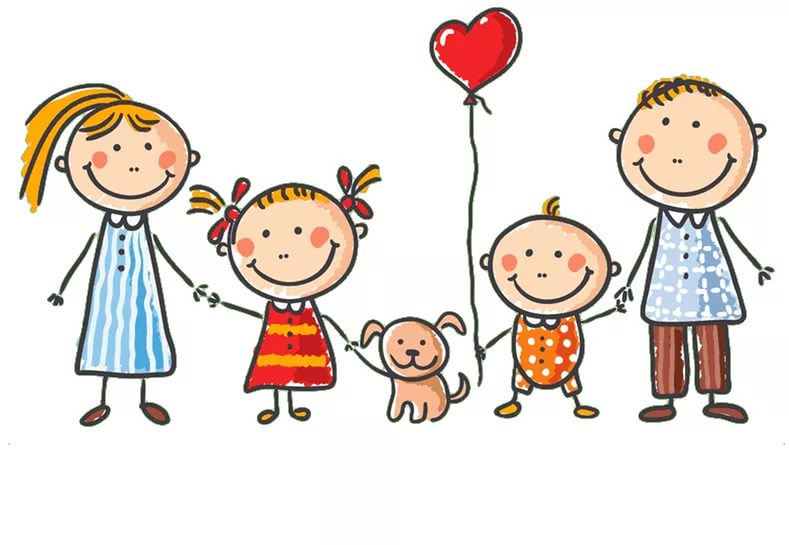
The article will tell you how to properly spend the test "Family Family" test and how to interpret it.
The content of the article
- Family drawing - Picturesque test for preschoolers: Interpretation of test results
- Instructions for the test "Family drawing", how to make it right?
- Interpretation of the test "Family Drawing": Rules
- Test - Family Drawing: Examples
- Video: "Psychological analysis of children's drawing Methods for conducting independent analysis by steps"
Family drawing - Picturesque test for preschoolers: Interpretation of test results
The test, conducted by drawing, called "My Family" should be held with the child who stepped over the 5-year age. It was at this time that the informed picture of the relationship between parents, behavior with each other and the rest of the family was already fully emerged in the child's head of the child.
You can carry out this test at home yourself (if you have an appropriate psychological education or know how to interpret the drawing). In other cases, the test commit professional psychologists at kindergartens and schools to learn about the mental state of the child and to help him in time, talking with their parents.
IMPORTANT: Timely psychological assistance, which can be done, relying on the test "My family," can protect the child from injury, to know the baby on the other hand, to identify his secret thoughts.

Good test to analyze relationships in the family and child and his mental condition
Instructions for the test "Family drawing", how to make it right?
How to test the test. Attributes:
- Find a quiet place for testing, comfortable and calm. Written table and convenient chair must be present.
- Give the child a blank sheet of landscape or printer paper (it should be completely clean, without any distinguished, stains and extraneous inscriptions). Let the child arrange the sheet as it is comfortable: vertically or horizontally.
- As writing accessories, give a child or a set of pencils, or a set of markers (they are most comfortable, as paints or chalk can leave stains and implications that can disrupt the interpretation of the dough). The child must have a complete palette of shades (10-12 colors or more) so that he can accurately choose the color that feels.
Instructions for test:
- After giving the child all the attributes, tell him: "Draw your family."
- Pay attention to how the child will react to this request. Some kids can immediately say "I don't know," "I don't want", "what is it?". In this case, this characteristic suggests that the child has not yet been an understanding of the family. If it does not go anywhere, you can ask the baby to draw your family, but the family, for example, animals. Such a drawing is also interpreted personally.
- Follow the mood of the child, with whom he draws: What is his grimace, silently he does it or constantly tells something, angry or smiles.
Important: If you know that a quarrel or divorce happened in the family not so long ago, it is better not to conduct such a test for this period of time, since in most cases the baby will set out all its negative thoughts on paper.
What should be considered:
- Give the child a complete freedom of action
- Do not say that he needs to draw and where
- Do not stand over a child
- Do not ask him to change pencils
- Should not comment on all drawings of the child
- Interpretation needs to be carried out only after the drawing is fully completed.
- To interpret the drawing should not be in a child
- Silently watch for whom the child draws the first, and whom the last one.

How to draw a family to interpret psychological test: instructions and rules
Interpretation of the test "Family Drawing": Rules
Rules:
- The drawing has nothing casual. If a foreign person is present on a sheet of paper, it necessarily matters for a child. Either on the turn: The missing member of the family is missing and in a sensual understanding of the baby: negative feelings for him, resentment, jealousy, or the person behaves badly and in drawings the child tries to strike him out of his life.
- If there is no child in the picture. This feature characterizes the baby not from the best side: either he has no realization, or he understands that he feels good without his family.
- Pay attention to the size of the image.It is believed that the size of the characters on the sheet of paper is directly important: large characters are more significant than small.
- Specify who where. After the child finishes his drawing, ask him about who and where is depicted, even if you are all extremely clear. By the nature of the interpretation of the baby, make your conclusions about how he belongs to different family members.
- Fictional character. In some cases, the child can replace the existing family member by a fictional character and it is also important. Most likely, this person often does not happen.
- Location.The value is also the same where each character and family member is located. Those who are in the top of the leaflet are the most important and influential in the family, those who are lower - those who should obey.
- Distance. The meaning also has the way the characters are located apart from each other. The closer to the child will be the family members with which the child is comfortable and further those that cause negative emotions.
- Small child. If the kid drew himself very small, it means only that he has a very low self-esteem.
- Close location.If the Family members have bodily contact (hugging, keeping hands, kiss each other and so on), then this means only that in real life it happens very often.
- Like kid draws. If the particular elements of the picture of the child draws with a strong pressure of a pencil, it means that it is the subject or a person he depicts, it refers to the most alarming. If the drawing is unspecified (for example, a thin or trembling line) - this suggests that the child is afraid to draw, as it is afraid in real life.
- Head.It matters its size. The most intelligent and reasonable member of the family, according to the baby, will be the biggest head, and the one who is stupid and is often mistaken - the smallest.
- Eyes.For a child's eyes, this is what you can cry and because the largest and big will be at someone who is often upset and drowshes tears. Eyes - as well as sorrow expresses.
- Ears.In the children's understanding of the ears - this is what you need to listen and "obey". Those who have ears will be the largest, must perform adult instructions.
- Mouth.It is believed that the mouth is given to scream and the largest (as well as open mouth) will be at the one who most in the family increases the voice. At the same time, big lips will be someone who often kisses and who often shows their love.
- Neck. In a children's understanding, this part of the body is self-control. If a drawn family member has a neck - he knows how to control his emotions and feelings. If the child itself does not have neck in the drawing - it is a sign that you require a lot from him.
- Hands.They symbolize mutual understanding and attitude towards others. If your hands are big, there are many fingers - this character is strong, if not, is weak soul and character.
- Legs. This part of the body is the confidence of the character in itself. If the legs in the air are a little respect and not confident in herself, if it is firmly standing on Earth - this is its status and in life, and in the family.
- The sun.It always symbolizes heat and positive. If the sun is present in the drawings, then the family is kind and happy. The child in such a family feels protected and beloved .
- House.This element is present in the drawings of those children that they love the homely atmosphere, the situation and love to always return home because there is no quarrel, scandals and misunderstandings, but only comfort, comfort and caress.
- Toys. Other elements may also be present: bright clothes, food and sweets, balls and gifts, pets flowers and much more. All these elements only suggest that the baby's life is happy and filled with pleasant moments.
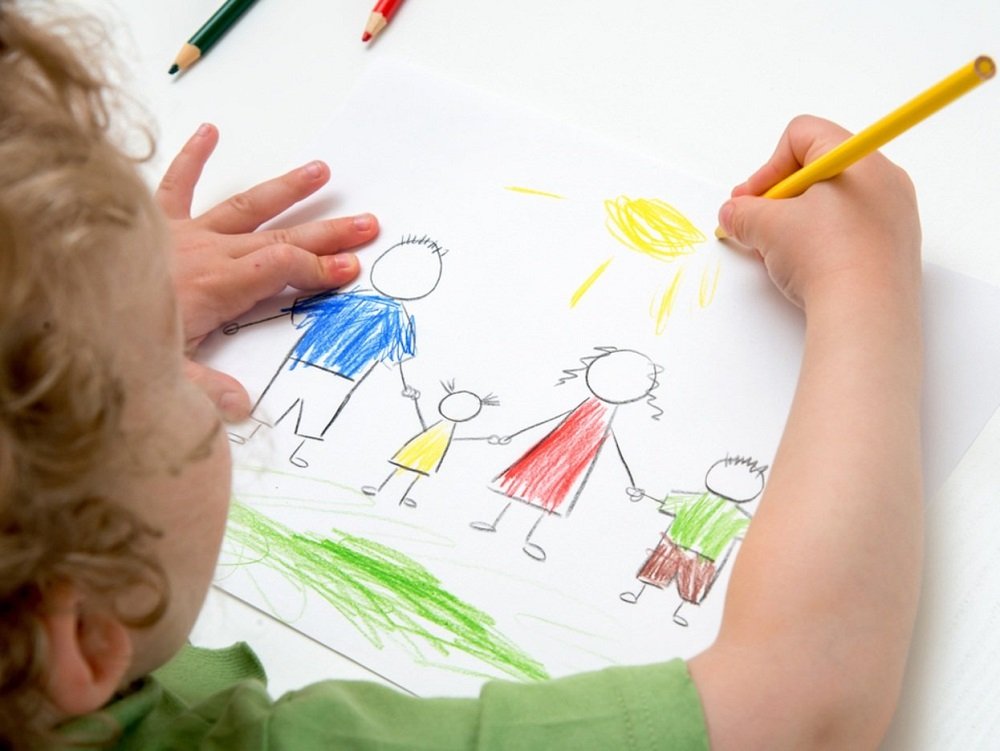
How to explain to the child the rules of drawing the dough "My family" and what to pay attention to?
Test - Family Drawing: Examples
Examples of drawings and indicative interpretations:

Figure: Example number 1
Interpretation:The family has problems in relationships. The grandmother is played in the primary role, which is present very often and manages the life of parents. Nevertheless, parents know how to manage their emotions, and dei obedient and friendly.

Figure: Example number 2
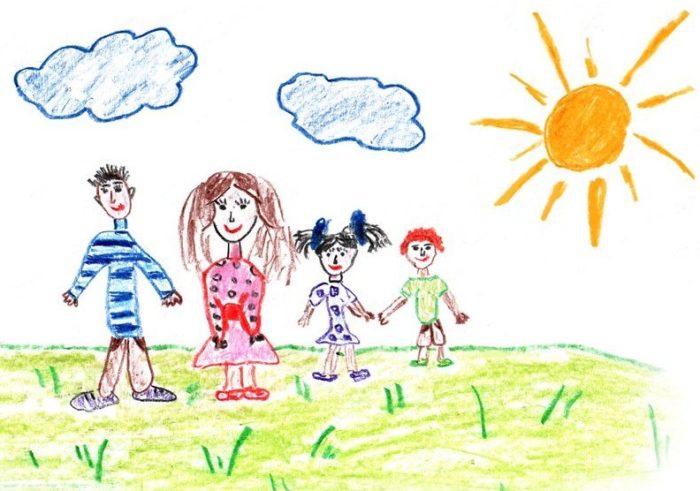
Figure: Example number 3
Interpretation: Family happy and friendly. Children love each other very much. Smiles on the faces suggest that all family members love and please each other. Mom has a calm, reasonableness and makes important solutions in the family. Dad is first, which means he is a leader and a getter.

Figure: Example number 4
Interpretation: Children love their home very much. In the family there is a way and understanding. All family members trust each other. Dad - the leader in the family.
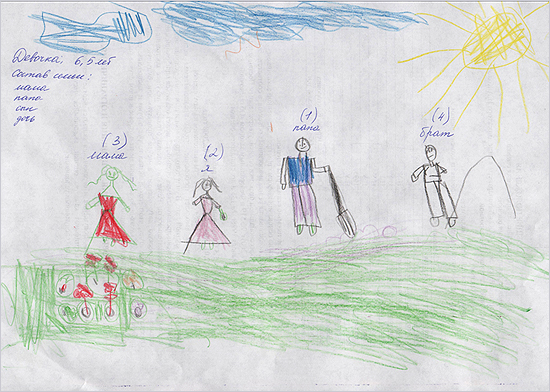
Figure: Example number 5
Interpretation:There is some misunderstanding in the family, it is read by how far all family members are located apart.
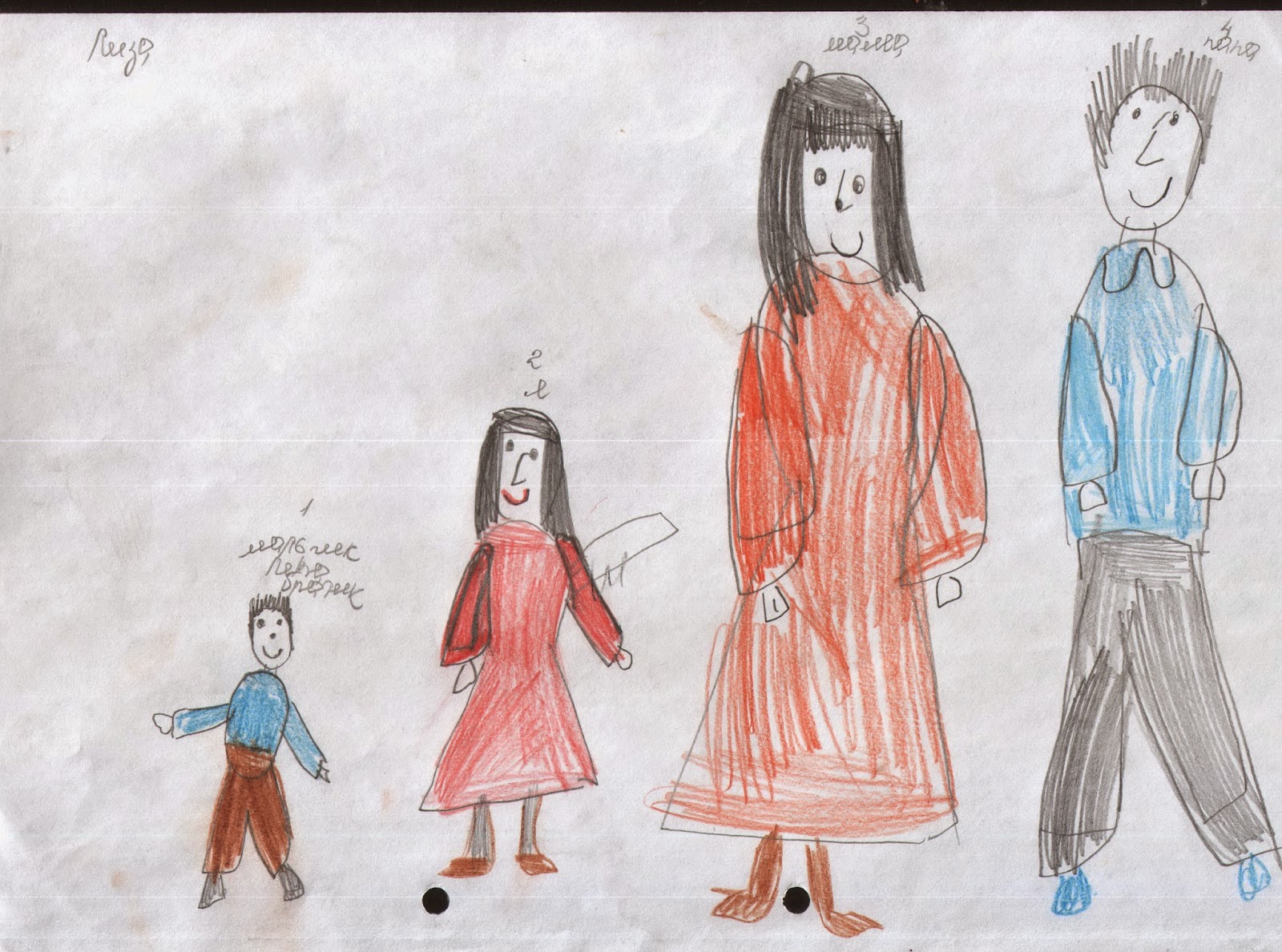
Figure: Example number 6
Interpretation: Dad - can manage its emotions, makes decisions in the family and dominates mom. Mom occasionally is emotional, but children consider her smart. Children love parents and try to imitate them (it is read by how they are all dressed).

Figure: Example number 7
Interpretation:The family stands insecure on the legs (no soil, maybe they often move or do not have home, work). Nevertheless, everyone is confident, feels its power in society.

Figure: Example number 8
Interpretation: Children are happy in the family and friendly among themselves and with mom. Dad is also there, but maybe he is often at work. However, children consider parents intelligent and an example for imitation.
